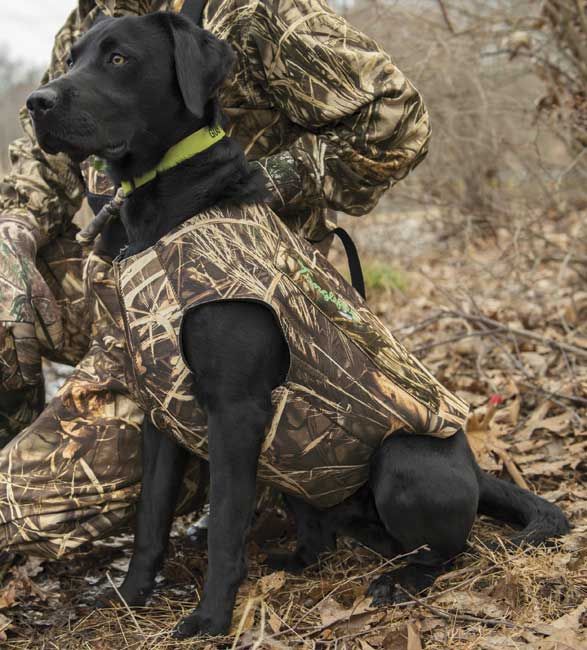
As a hunter, you know your dog is your most valued partner in helping you have a successful hunting trip. And as you also know, hunting is as much fun for them as it is for you.
With that said, you must do everything you can to help keep your pup safe.
There are some necessary hunting gears for dogs that you should have on hand at all times. And a hunting vest is no exception.
These vests are as important for your four-legged friend as it is for you. Therefore, ensure your hunting companion is wearing their own at all times.
Are dog vests essential during hunting?
You may have wondered whether your dog needs a hunting vest. The answer is a resounding, yes! The hunting vest increases his visibility to other hunters. It also provides a good protection in case he runs through barbed wire fencing.
Getting the right size hunting vest for your dog
Sizing is crucial to the effectiveness of dog vests. Not every dog fits every vest. If they are too small, they will be uncomfortable and difficult to put on. If they are too large, they will flop around and fall off.
Therefore, it is important to measure your dog before ordering a hunting vest.
We want to help you get the right vests for your dog the first time!
How to measure a dog for a hunting vest
Below are a few guidelines that will help measure your dog for a hunting vest.
To start with, make sure that your dog is stood up when you measure them. If they’re sat down, then the measurements won’t be accurate. You may need to ask someone to help you if your pup likes to fidget!
Step 1: Roughly measure the circumference of the neck where the collar would usually sit.
Step 2: Take your tape measure from the nape of your dog. The nape of your pup’s neck is where the neck joins the base of the skull in the back of the head. And please be as accurate as possible.
Measure from this point to where your dog’s tail joins their body (not the tip of the tail). This sounds pretty straight forward, right?
Step 3: It is very important to take girth into consideration, as well. That’s the measurement around your pooch’s abdomen.
Once you’ve measured your dog’s body, compare it against the sizing chart for the brand of vest you’re looking to buy.
Most companies will have a sizing chart. Even so, sizing can vary greatly between brands and medium size in one brand may be totally different in another.
Make sure his posture is maintained while you are measuring.
Important things to note:
It’s a good idea to have the number noted down in both inches and centimetres.
When wrapping the tape around the chest and neck, don’t squeeze too tight. Ensure there is enough room between the measuring tape and your pet. In other words, use the two-finger rule.
If you don’t have a tape measure, use a piece of string and measure this against a tape or ruler.
If your pooch is huge, has a broader shoulder, thick coat or is at the maximum measurement for the size listed against the product you may want to go up the next size for a better fit.
When choosing the size that best fits your furry friend, there’re a few crucial factors to think about. The exact fit around the chest is vital. If a vest is very tight around the chest, it may cause irritation and discomfort. If it’s too loose, your pooch may be able to step out of it. Additionally, if it is too tight around the neck, it could interfere with your pup’s breathing.
If your dog’s measurements fall in between two sizes, order the next size up.
Final thoughts
The initial step in finding out which hunting vest is right for your pup is to take accurate measurements. As we all know, dogs come in all sizes and shapes from Russian Toys to German shepherds. Plus, dogs of the same breed can also differ in weight, height and length.
When choosing a vest, therefore, you need to consider not only the breed but also your dog’s exact measurements. Remember to measure the neck circumference, girth, length and chest.